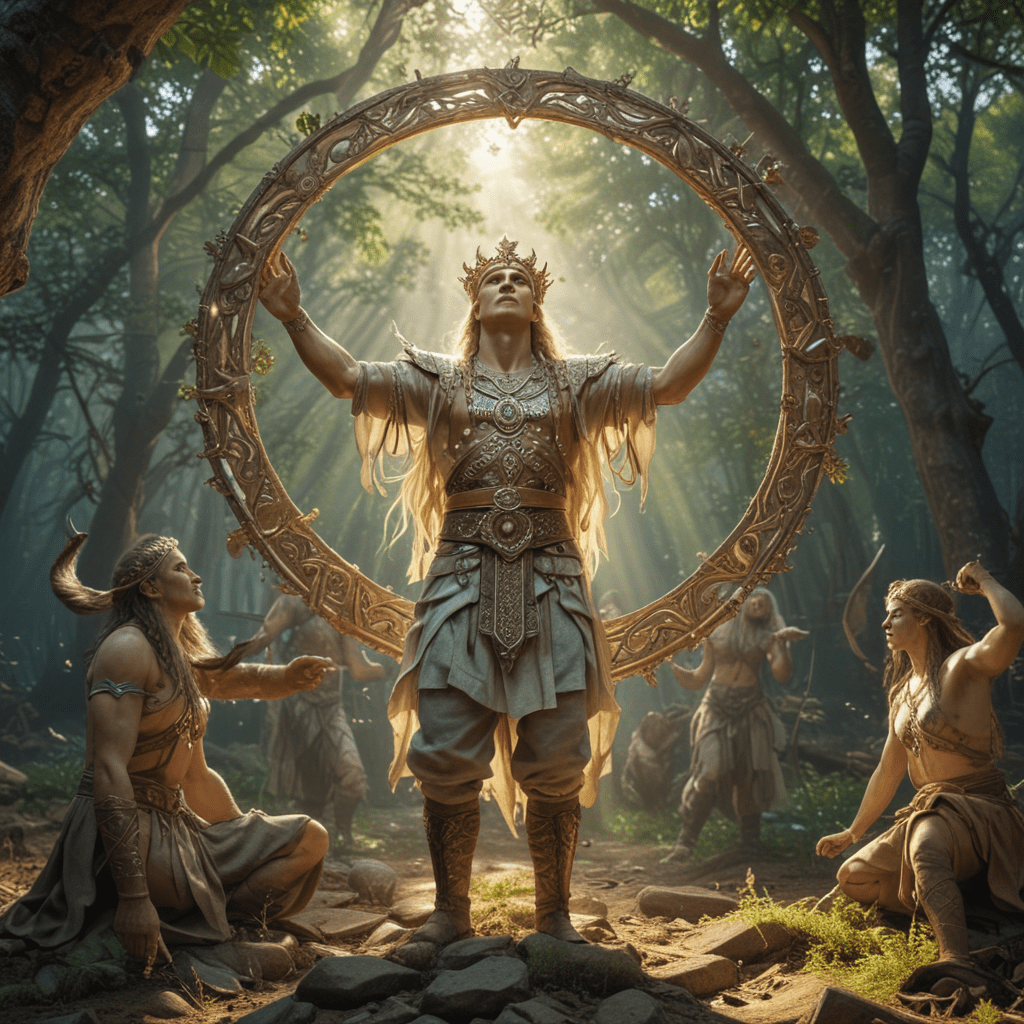Concept of Renewal in Slavic Mythology
I. Introduction
The concept of renewal is deeply ingrained in Slavic mythology, embodying the cyclical nature of life, death, and rebirth. Slavic beliefs held that the universe was in a constant state of transformation, with seasons changing, plants growing and decaying, and even the sun and moon following a path of birth, decline, and renewal. This article explores the multifaceted role of renewal in Slavic mythology, examining its significance in life and death, seasonal transitions, agricultural practices, rituals of rebirth, and the symbolism of celestial bodies, water, and certain animals.
II. The Cycle of Life and Death
In Slavic mythology, death was not seen as an end but rather as a transition to a new phase of existence. According to ancient beliefs, the soul left the body after death and embarked on a journey to the otherworld, where it awaited reincarnation. This cycle of life and death was symbolized by the god Triglav, who was depicted with three faces representing birth, life, and death. The myth of the god Jarilo, who died and was reborn each spring, further emphasized the cyclical nature of existence, mirroring the renewal of life with the changing seasons.
III. Seasonal Renewal
The changing seasons played a crucial role in Slavic mythology, with each season representing a different stage of the life cycle. Spring was associated with rebirth and growth, summer with abundance and flourishing, autumn with harvest and decay, and winter with dormancy and the promise of new life. Seasonal festivals and rituals were held to mark these transitions, ensuring the continuation of the cycle and the balance of nature. The arrival of spring was eagerly anticipated, as it brought new life to the land and fueled the hope of a bountiful harvest.
VI. The Sun as a Symbol of Renewal
In Slavic mythology, the sun held a pivotal role as a symbol of renewal and rebirth. It was revered as the celestial body that brought warmth, light, and life to the earth. The sun's daily journey across the sky represented the cyclical nature of existence, as it rose each morning, reached its peak at noon, and descended westward at dusk. Slavic folklore is replete with tales of the sun god Dažbog, who rode across the heavens in a golden chariot, bringing fertility and prosperity to the land.
VII. The Role of Water in Renewal
Water was another potent symbol of renewal in Slavic mythology. Rivers, lakes, and wells were believed to possess purifying and revitalizing powers. Ritual bathing was commonly practiced to cleanse the body and spirit, preparing individuals for new beginnings or important life transitions. Water was also seen as a source of life, as it was essential for the growth of plants and the survival of all living creatures. Slavic myths often featured water spirits, such as rusalki and vily, who were associated with both renewal and danger.
VIII. Animals Associated with Renewal
Slavic mythology attributed unique symbolic meanings to various animals, with some species representing renewal and rebirth. The stork, for instance, was revered as a bringer of new life, and its presence near a household was considered a blessing. The swallow was also associated with renewal, as it returned each spring to herald the arrival of warmer weather. Other animals, such as the snake and the bear, symbolized both death and rebirth due to their ability to shed their skin or hibernate and emerge anew.
IX. Renewal in Slavic Folklore
Slavic folklore is a rich source of tales and legends that embody the concept of renewal. The motif of a hero's death and resurrection appears frequently, reflecting the belief that even in the face of adversity, hope and renewal can prevail. Many Slavic folk tales feature characters who undergo transformations or overcome challenges, representing the transformative power of renewal. The tale of the firebird, which dies and is reborn from its own ashes, is a particularly potent example of this theme.
X. Conclusion
Renewal is a fundamental concept in Slavic mythology, permeating various aspects of life and the natural world. From the cycle of life and death to the changing seasons, agricultural rituals, and the symbolism of celestial bodies, water, and animals, the Slavic worldview emphasized the transformative nature of existence. This concept of renewal provided hope and solace to the Slavic people, reminding them that even in the face of adversity, the promise of new beginnings and rebirth was always present.
FAQs
Q: What is the significance of the sun in Slavic mythology?
A: The sun is a symbol of renewal and rebirth, representing the cyclical nature of existence.
Q: How is water associated with renewal in Slavic mythology?
A: Water is believed to possess purifying and revitalizing powers, symbolizing new beginnings and the source of life.
Q: Which animals are connected to renewal in Slavic mythology?
A: Animals like the stork, swallow, snake, and bear are associated with renewal due to their symbolic meanings and life cycles.
Q: How is the concept of renewal reflected in Slavic folklore?
A: Slavic folklore abounds with tales and legends that embody the theme of renewal, featuring heroes who overcome challenges and undergo transformations.




